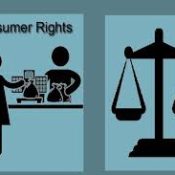
Eviction Law Explained: Balancing Justice Between Tenants and Landlords
Eviction laws play a crucial role in maintaining harmony between tenants and landlords. These laws are designed to protect the rights of both parties — ensuring that landlords can reclaim their property lawfully while tenants are shielded from unfair or arbitrary eviction. Understanding the legal framework surrounding eviction is essential for avoiding disputes, ensuring compliance, and upholding the principles of justice in the rental housing system.
1. Understanding Eviction and Its Legal Meaning
Eviction refers to the legal process by which a landlord removes a tenant from a rented property. This process cannot be carried out arbitrarily; it must follow the procedures established under law. Eviction usually occurs when the tenant fails to comply with the terms of the lease agreement — such as non-payment of rent, misuse of property, or unlawful occupation after the lease term expires.
The law ensures that both the landlord’s right to possession and the tenant’s right to shelter are respected. Eviction, therefore, is not just a physical act of removing someone from property — it is a regulated legal action governed by statutes and court procedures.
2. The Legal Framework of Eviction in India
In India, eviction laws are primarily governed by state-specific Rent Control Acts and the Transfer of Property Act, 1882. These laws define the rights, duties, and remedies available to both landlords and tenants.
Under the Transfer of Property Act, a landlord can seek eviction for reasons such as:
Non-payment of rent
Subletting without permission
Property misuse or illegal activities
Expiration of tenancy period
Bona fide need of the landlord
State Rent Control Acts (like the Delhi Rent Control Act, Maharashtra Rent Control Act, etc.) provide detailed provisions regarding rent increase, eviction grounds, and tenant protection. While these laws may vary across states, the core objective remains the same — to balance the interests of landlords and tenants fairly.
3. Legal Grounds for Eviction
Eviction cannot take place simply based on a landlord’s wish. The law specifies certain legitimate grounds under which eviction can be sought. Some of the most common reasons include:
Non-Payment of Rent:
When a tenant fails to pay rent for a specific period despite reminders or notices, the landlord can issue an eviction notice.
Violation of Lease Terms:
If the tenant uses the property for purposes other than those mentioned in the agreement (for example, using a residential property for commercial activity), eviction can be initiated.
Damage to Property:
Willful damage or structural alteration of the rented premises without consent can lead to eviction.
Subletting Without Permission:
Transferring possession to another party without written approval from the landlord is a valid ground for eviction.
Landlord’s Personal Requirement:
When a landlord needs the property for self-use or for a family member, the law allows eviction under the condition of bona fide requirement.
Expiry of Lease:
Once the lease term ends and the tenant continues to occupy the property without renewal, the landlord can seek eviction through proper legal channels.
4. The Eviction Process: Step by Step
The eviction process is a formal legal procedure that must follow due process of law. Here’s how it typically unfolds:
Step 1: Issuing a Legal Notice
The landlord must issue a written eviction notice to the tenant, specifying the reason for eviction and the time allowed to vacate (generally 15 to 30 days, depending on the agreement and local laws).
Step 2: Filing an Eviction Petition
If the tenant fails to comply with the notice, the landlord can file an eviction petition before the appropriate rent controller or civil court.
Step 3: Court Proceedings
Both parties present their arguments, evidence, and documents in court. The court examines whether the grounds for eviction are valid and if the tenant’s rights are being respected.
Step 4: Court Order
If the court finds the eviction justified, it issues an eviction order directing the tenant to vacate the property within a specified period.
Step 5: Execution of the Order
If the tenant still does not vacate, the landlord can seek help from court authorities for physical possession of the property.
Throughout this process, both parties are given fair opportunities to present their case, ensuring that justice is served equitably.
5. Tenant’s Rights Under Eviction Law
Tenants are legally protected against unlawful or forceful eviction. Some key rights include:
The right to receive proper notice before eviction.
The right to contest the eviction in court.
Protection from eviction without valid legal grounds.
Right to peaceful possession until the legal process concludes.
Landlords cannot forcibly remove tenants, change locks, or cut essential services such as electricity and water. Doing so constitutes illegal eviction and may attract legal penalties.
6. Landlord’s Rights and Responsibilities
While tenants enjoy protection, landlords also have legitimate rights under eviction law. They are entitled to receive rent on time, maintain control over property use, and recover possession when legally justified. However, landlords must ensure that all actions align with the law. They cannot evict tenants through threats, harassment, or without proper legal notice.
A responsible landlord should maintain transparency, follow due procedure, and document all interactions to prevent legal complications.
7. Balancing Justice Between Tenants and Landlords
The true essence of eviction law lies in maintaining balance. On one hand, landlords have the right to safeguard their property and recover it for genuine needs. On the other, tenants deserve security and protection against arbitrary eviction.
Courts aim to uphold this balance by examining the circumstances of each case carefully. For instance, a landlord’s bona fide requirement is respected — but only when it is proven genuine. Similarly, tenants who comply with lease terms and pay rent regularly cannot be evicted unjustly. This legal equilibrium ensures that both sides are treated with fairness and dignity.
8. Preventing Eviction Disputes: Best Practices
Disputes can often be avoided through mutual understanding and proper documentation. Here are some preventive measures:
Always execute a written rent agreement specifying terms, rent amount, and duration.
Maintain clear communication about rent payments, property use, and maintenance.
Issue and keep copies of rent receipts and written notices.
Seek legal advice before initiating eviction or refusing to vacate.
By following these practices, landlords and tenants can prevent misunderstandings and build a cooperative relationship based on trust and legality.
9. The Importance of Legal Assistance
Eviction cases can become complex due to varying state laws and documentation requirements. Seeking professional legal assistance ensures that the process is handled correctly and that your rights are fully protected. Lawyers specializing in property and tenancy law can help in drafting notices, filing petitions, representing clients in court, and negotiating settlements.
Conclusion
Eviction law is not about favoring one side over another — it is about ensuring justice and fairness in housing relationships. Landlords and tenants both play vital roles in maintaining the integrity of the rental system. When both parties understand their rights, responsibilities, and legal boundaries, disputes can be minimized and harmony preserved.
Ultimately, eviction laws aim to strike a delicate balance — protecting ownership rights while preserving the dignity and security of lawful tenants. Knowledge, compliance, and respect for due process are the cornerstones of a just and fair rental ecosystem.
All Categories
Recent Posts
Consumer Protection Law: Safeguarding Consumer Rights
Tags





